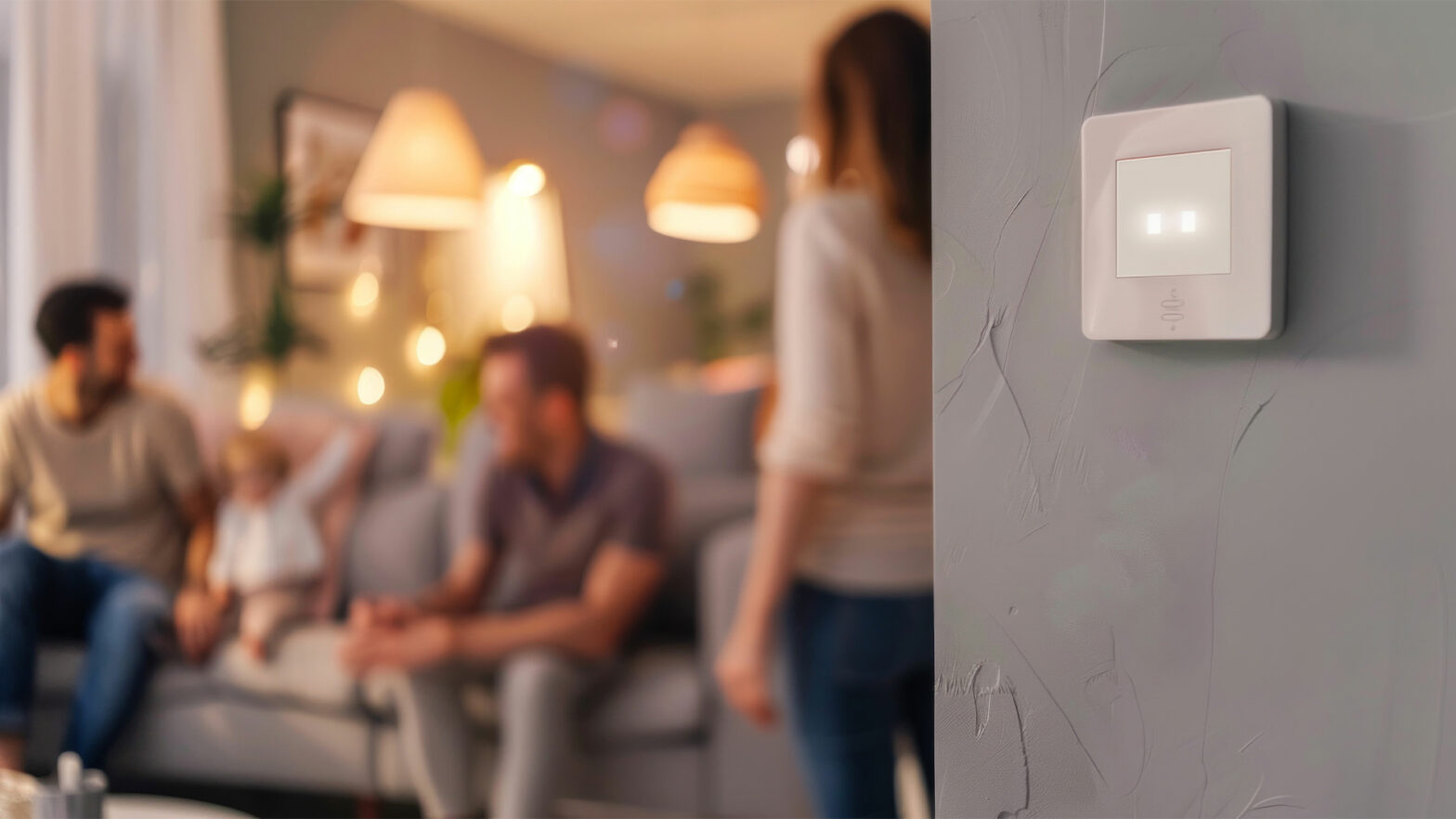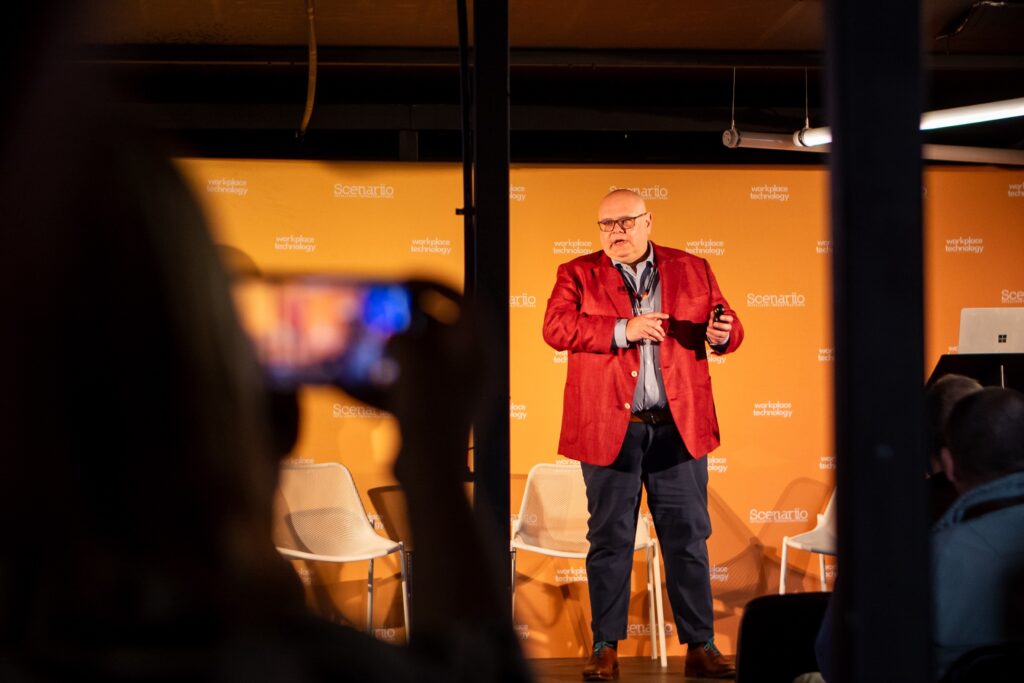
By Rob Pritchard, managing director of Scenariio, which is an IT and smart building infrastructure company based in Derby
For the past two years, our summer Workplace Technology Conference has brought together companies from across the smart building industry to explore how technology will shape the future of work.
This year, our event featured a distinguished lineup of speakers, insightful discussions, and trade stands showcasing innovations from various firms.
Among the wealth of information presented, one statistic stood out: only 0.2% of a building’s lifecycle costs are dedicated to its design, and just 2% to its construction.
The overwhelming majority — 88% — is spent on operations, with the remainder going towards maintenance. This compelling fact was shared by our keynote speaker, Andrew Heywood-Hughes, who has extensive experience working with organisations such as the NHS to refine their operations, including building design and functionality.
This disparity is not surprising to us. Our work consistently reveals that minimal time and budget are allocated to the early stages of building design and construction.
Often, there is no additional budget for smart building technology, which is mistakenly perceived as an optional luxury rather than a crucial investment that can significantly reduce operational costs.
Tim Miscovich, chief commercial officer at smartengine wtec, emphasised that the UK is lagging behind the USA in investing time and resources at the design and build stage to minimise operational expenses.
He attributed this to entrenched British traditions in building design and construction, which often favour cost-effective yet outdated methods, so he urged a shift in our perspective towards considering every option for implementing smart building technology in new developments.
Central to this technology are sensors that generate data, providing invaluable insights into building performance and opportunities for improvement, by measuring key metrics such as occupancy, movement, temperature and air quality.
Their design, positioning, connectivity, and data integration must be considered from the outset, but consolidating this data in a central location, ideally a site server or comms room, simplifies the management of smart networks.
When all devices communicate on the same network, the implementation of energy-saving or performance-enhancing technologies becomes more straightforward.
For instance, daylight harvesting can optimise natural light, reducing energy waste, while lights can be adjusted to sync with circadian rhythms, while air conditioning units can be turned off when spaces are unoccupied and air quality can be continuously monitored.
In addition, advanced analytics can identify performance trends and there is no doubt that the potential for AI-managed buildings is within reach.
However, AI requires high-quality data from the start, and retrofitting later is both costlier and less efficient, and the backbone of this smart infrastructure is IT/data cabling, which is referred to as the building’s fourth utility, alongside water, gas, and electricity.
It is now possible to use a single ethernet cable to carry both data and power, eliminating the need for separate 240V electrical connections for devices like CCTV cameras, lights, Wi-Fi access points, sensors, phones, laptops and so much more, while its low voltage ensures safety.
Embracing smart building technology from the beginning is essential for creating efficient, sustainable, and user-friendly environments. The initial investment may be higher, but the long-term benefits and savings far outweigh the costs, making it a wise choice for the future.
The integration of smart technology into buildings marks a significant evolution, although its adoption in the UK remains gradual due to entrenched traditional methods.
Our experience last year with the BBC Children in Need’s DIY SOS Big Build project at Treetops Hospice exemplifies these challenges and the remarkable benefits of smart solutions.
Our task was to implement smart LED lighting with tuneable white lights and daylight harvesting, complemented by environmental sensors for temperature and air quality monitoring.
Despite the project’s rapid timeline, the designers initially adhered to conventional interior fit-out plans. However, we introduced data cables instead of the typical 240V power cables, which sparked curiosity and questions among the electricians.
Through collaborative effort, the teams adapted and successfully delivered a sophisticated system that enhanced the hospice’s functionality. The ease of integrating the building management system with our sensors and lights underscored the efficiency and speed of smart technology.
The long-term benefits of smart building technology for Treetops Hospice are substantial. If similar solutions were adopted across the healthcare sector, where electricity accounts for 50% of annual expenditures, totalling £400 million, energy costs could be drastically reduced.
By utilising smart lighting with LED lights, sensors, and daylight harvesting, energy expenses could be cut by up to 90% compared to standard fluorescent lighting and by 40% compared to basic LED setups.
Adopting smart building technology, which unifies all building devices into a single infrastructure, transforms modern commercial buildings into controllable, efficient environments. This approach not only meets carbon reduction goals but also simplifies management and reduces long-term operational costs.
However, achieving these benefits requires a shift in mindset and an upfront investment in smart infrastructure, but, as Andrew says, while the initial costs may rise, the long-term savings and improved user experiences justify the investment.
By embracing smart technology, we will pave the way for 21st-century buildings that are more efficient, sustainable, and user-friendly, but we won’t achieve this if we don’t change our approach and invest in the infrastructure sooner.




























